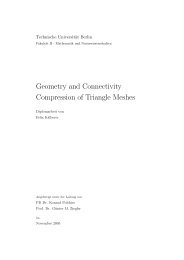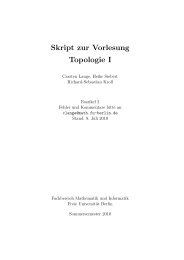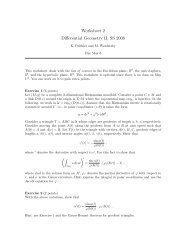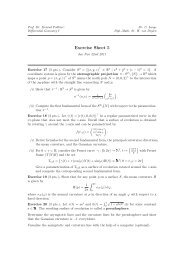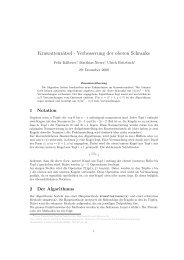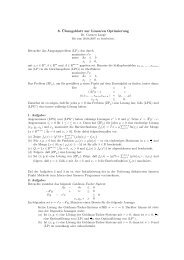Worksheet 5 Differential Geometry II, SS 2008
Worksheet 5 Differential Geometry II, SS 2008
Worksheet 5 Differential Geometry II, SS 2008
Create successful ePaper yourself
Turn your PDF publications into a flip-book with our unique Google optimized e-Paper software.
Exercise 6 (6 points)<br />
Assume that G is connected and that the metric tensor is left-invariant. Show that the following<br />
statements are equivalent:<br />
(1) (·, ·) is bi-invariant.<br />
(2) Adg acts by isometries on TeG ∼ = g for all g ∈ G.<br />
(3) adX is skew-adjoint, i.e., (adXY, Z)e + (Y, adXZ)e = 0 for all X, Y, Z ∈ g.<br />
(4) The covariant derivative induced by (·, ·) satisfies 2∇XY = [X, Y ] for all X, Y ∈ g.<br />
(5) The curves exp(tX) are geodesics for all X ∈ g.<br />
Hints: (1) =⇒ (2) is rather straightforward. To show (2) =⇒ (3), use that Ad exp(tX) is an<br />
isometry and differentiate with respect to t. To obtain (3) =⇒ (4), use the Koszul formula.<br />
To show (4) =⇒ (5), notice that ∇XX = 0. Vice-versa, use polarization to deduce that<br />
(5) =⇒ (4), and use the Leibnitz rule to show (4) =⇒ (3). To obtain (3) =⇒ (2), differentiate<br />
(Ad exp(tX)(Y ), Ad exp(tX)(Z)) to show that Adg is an isometry for all g in a neighborhood U<br />
of e and use that any element of G can be expressed as a finite product of elements of U.<br />
Finally, (2) =⇒ (1) is rather straightforward again.




